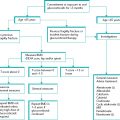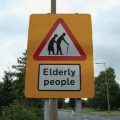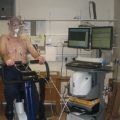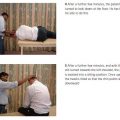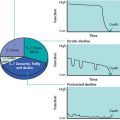Aetiology
The aetiology of delirium is not fully understood. A genetic predisposition is possible. Inflammatory mediators may play a part. There is widespread cortical involvement in delirium, reflected in the wide range of symptoms, disturbances of conscious level and sleep–wake cycle, with illusions and hallucinations.
Although little is known of the pathophysiology of delirium, more is known about its predisposing and precipitating factors. These are shown in Box 3.1. Many of these factors occur commonly. If more predisposing factors are present, a lower severity of precipitating factor may provoke delirium.
Diagnosis
Delirium is particularly common in the post-operative period (43–61% after hip fracture, and higher in intensive care). It is also prevalent in the emergency department, affecting one in seven older patients. It is an acute condition, with symptoms developing over hours or days. People with delirium appear disorientated and are unable to focus their attention. Conversations are difficult to follow. Fluctuation in symptoms occurs, often with a diurnal pattern (i.e. worse at night), and lucid or symptom-free intervals may occur.
Box 3.1 Predisposing and precipitating factors for delirium
| Predisposing factors | Precipitating factors |
| Old age | Immobility |
| Severe illness | Use of physical restraint |
| Dementia | Use of urinary catheter |
| Physical frailty | Iatrogenic events e.g. general |
| Admission with infection or | anaesthesia |
| dehydration | Malnutrition |
| Visual/hearing impairment | Psychoactive medications |
| Polypharmacy | Intercurrent illness |
| Surgery e.g. fractured neck of femur | Dehydration |
| Alcohol excess | Benzodiazepine or alcohol |
| Renal impairment | withdrawal |
From: Royal College of Physicians/British Geriatrics Society. (2006) The prevention, diagnosis and management of delirium in older people. National guidelines. RCP, London.
A diagnosis of delirium can be made when all four of the following features are present.
- hyperactive delirium (agitated and wandering)
- hypoactive delirium (quiet and withdrawn).
Some patients may have features of both. The hypoactive pattern is particularly important because it often goes unrecognised. Affective symptoms are sometimes prominent in delirium and may lead to the erroneous diagnosis of a mood disorder. In patients with preexisting dementia, delirium can be hard to spot. Delirium varies in both its severity and duration, and can last from a few days to several weeks.
Box 3.2 Diagnostic criteria for delirium
Symptoms are present in the following areas:
1 Disturbance of consciousness
- Reduced clarity of awareness of the environment, on a continuum from ‘clouded consciousness’ to coma, with a reduced ability to direct, focus, sustain and shift attention
2 Global disturbance of cognition
- Perceptual distortions
- Illusions and hallucinations – usually visual
- Impaired abstract thinking and comprehension (with or without transient delusional beliefs)
- Impaired immediate and recent memory but with relatively intact long-term memory
- Disorientation in time, place or person
3 Psychomotor disturbance
- Hyper- or hypoactivity and unpredictable shift from one to the other
- Increased or decreased flow of speech
4 Disturbance of the sleep–wake cycle
- Insomnia
- Daytime drowsiness
- Nocturnal worsening of symptoms
- Disturbing dreams or nightmares
5 Emotional disturbance
- Depression
- Anxiety
- Fear
- Irritability
- Euphoria
- Apathy
- Perplexity
(Acute alcohol and psychoactive substance use are excluded)
From: International Classification of Diseases (ICD) 10.
National guidelines recommend that all older people should have routine cognitive testing on admission to hospital (e.g. using the Abbreviated Mental Test – see Box 3.3). This is to aid the detection of delirium.
The differential diagnosis of delirium includes:
- dementia
- depression
- hysteria
- mania
- schizophrenia
- dysphasia
- seizures (temporal lobe seizure or non-convulsive status epilepticus).
The most important aspect of diagnosis in delirium is to get a full history from someone who knows the patient (see Figure 3.1).
Management of delirium
Prevention
Those at high risk for developing delirium (see Box 3.1) can be targeted for proactive care aimed at preventing it. Some risk factors cannot be changed, but many in the list of precipitating factors can be. Other factors, including environmental ones, are also important in the prevention (and management) of delirium, and are listed in Box 3.4.
Box 3.3 The Abbreviated Mental Test
1 How old are you?
2 When is your birthday?
Stay updated, free articles. Join our Telegram channel

Full access? Get Clinical Tree


